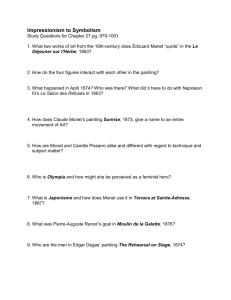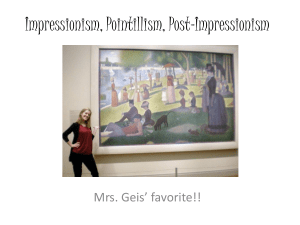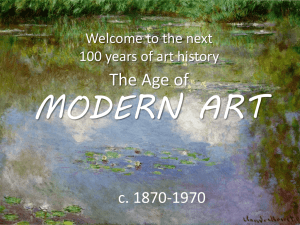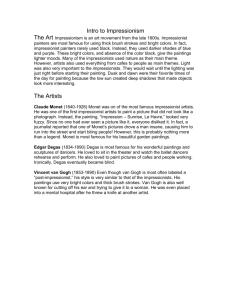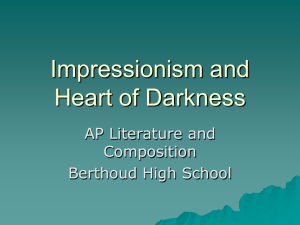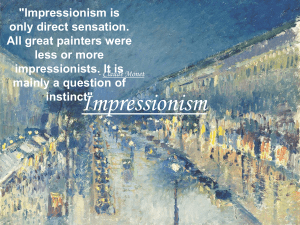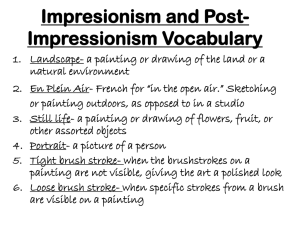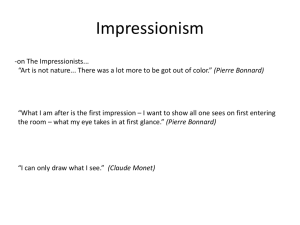4- French impressionism
advertisement
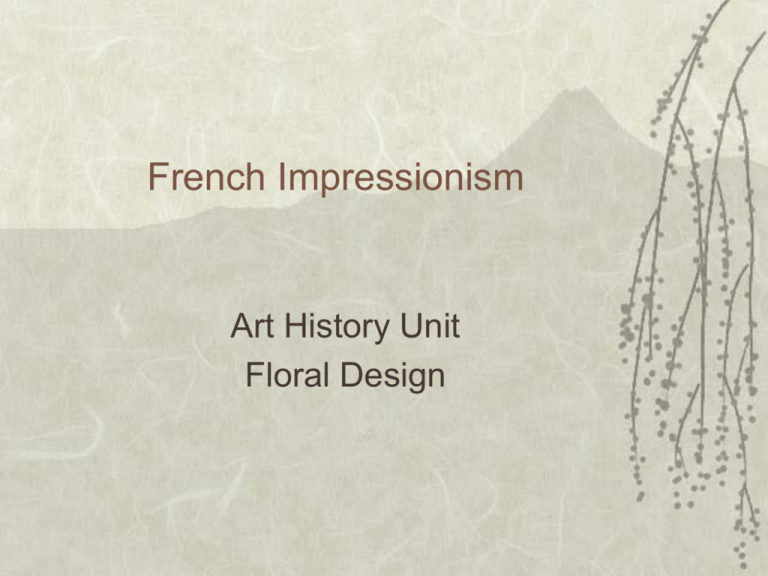
French Impressionism Art History Unit Floral Design French Impressionism Period Started by a group of Paris-based artists who exhibited their art in the 1860’s. The name of the movement is derived from Claude Monet’s Impression, Sunrise painting. Characteristics of Impressionist painting include visible brushstrokes, light colors, open composition, and emphasis on light in its changing qualities Radicals in their time, this group broke the picture-making rules of painting. They allowed colors to overpower lines. Primary Artists: Monet Degas Van Gogh Renoir Seurat Cezanne Monet Claude Monet – French painter, initiator, leader, and unswerving advocate of the Impressionist style Later, his attention was focused on the gardens at Giverny, which was Waterlilies, 1923 the theme for the series of paintings on Gardens at Giverny, 1900 Water-lilies Renoir Pierre-Auguste Renoir Renoir painted landscapes as well as people in intimate and candid compositions He sometimes applied paint with a palette knife rather than a brush. Characteristic of impressionism style, Renoir Girl with a Watering Can, 1876 painted not the details of a scene, but instead his figures softly fuse with one Dance at the Moulin de la Galette, 1876 another and the Degas Edgar Degas Best known for his ballet dancers and racehorses, because he was able to perfect movement in them He later became a photographer to capture movement accurately His paintings were like snapshots, freezing a moment in time He did not have dissolving lines His primary influence were Japanese prints (the odd The Dance Class, 1875 angles) At the Races, 1880 Seurat Georges Seurat The ultimate example of the artist as scientist Known for his technique called pointillism, or divisionism, which uses small dots or strokes of contrasting color to create subtle changes in form Later in his life he created 1 large canvas per year, all dotsAfternoon on the Island of La Grande Jatte, 1886 Sunday Vase of Flowers, 1880 The Potato Eaters,1885 Van Gogh Vincent Van Gogh, Dutch His work show the objects, people, and places in his life with bold, usually distorted, draughtsmanship and visible dotted or dashed brushmarks He only cut off his ear lobe He didn’t want to be famous He did have mental illness, but he painted when he was sane He is VERY popular, but also great He committed suicide (but it took 2 days) Wheatfield with Crows, 1890 Cezanne Paul Cezanne Known as the “Father of Modern Art” Lived as an outsider, very isolated He tried to bring back structure and mass to painting He focused on still lifes, bathers, and landscapes He made space confusing, with out depth Houses along the Road 1881 Compote, Pitcher, Fruit 1894
